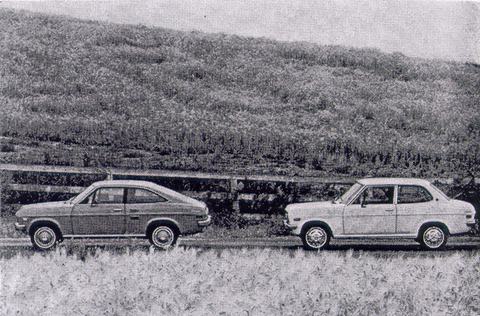Road & Track magazine September 1970, "&" monthly column
&... VARIOUS ITEMS, TECHNICAL & OTHERWISE
New Models
THIS FALL'S PARADE of new offerings is led, of course, by the Pinto and Vega. Meanwhile, the Great Big American cars will keep on getting bigger—their sales will probably decline further—and there are some new variations on the established "compacts" as well as some new import lines. For 1971 all cars sold in California must meet the new limit on emission of oxides of nitrogen—grams per mile—and this is being done generally by extra retardation of ignition at very low car speeds. Also, for 1971 the systems for control of fuel evaporation from fuel tanks and carburetors, required in California in 1970, are mandatory nationwide.[cut: information about new Mercury Comet]

[cut: information on new, larger 1971 Mercury Cougar]
Background
"This fall's parade" refers to the new model year introduction that occurs every October.
The Pinto and Vega were American-designed sub-compacts created to counter the emerging growth of the import cars. Meaning the Volkswagen Beetle -- Japanese cars were not taken seriously yet by Detroit. Japan would be fully recognized during the Fuel Crisisᵂ of 1973. They were very popular, outselling the Japanese "tin cans" by 30:1. By the end of the decade the tin cans gained a reputation of reliability and Detroit gained a reputation of junk.
Pinto
The Ford Pintoᵂ debuted 1970 as an American-built car -- notwithstanding Ford of Europe's already successful Escort. The Pinto was very successful, although too heavy resulting in poor fuel economy it outsold the Japanese cars anyways on the strength of
Vega
The Chevrolet Vegaᵂ, a Datsun 1200-sized car (sub-compact) was introduced in America in 1970.
The Vega was hugely popular, with fantastic styling (a mini-Camaro). Unfortunately, Detroit's cheapness applied to Vega's radical technology (aluminum block, advanced [non-]rust proofing) doomed it. Still it had eight very successful years dominating the small-car market in America.

![[Datsun 1200 encyclopedia]](/wiki/upload/wiki.png)
